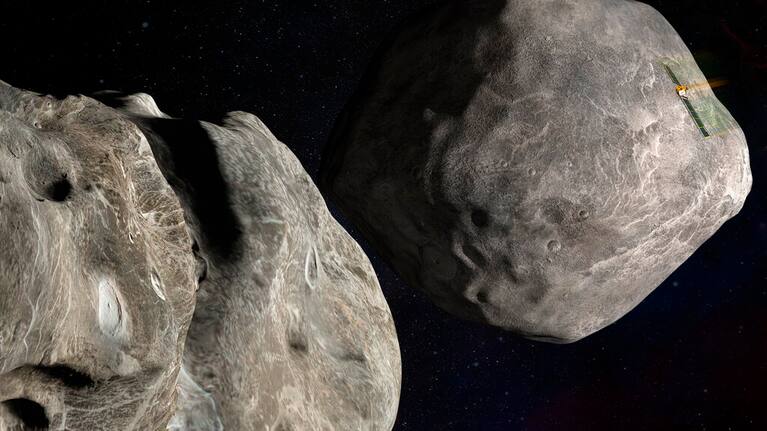NASA says humans should be able to sleep better tonight, knowing that a potentially earth-threatening asteroid could be targeted – and hit.
The world’s first planetary defence test – costing about NZ$580m - hit a big milestone today, with a fridge-sized satellite system called DART (Double Asteroid Detection Test) hitting a stadium-sized asteroid called Dimorphos, which orbits another asteroid, Didymos, 11 million kilometres away.
It posed no threat to Earth but offered the perfect target for the first ever mission of its type.
“A rock of that size hitting the earth...could level a small country,” said Ed Lu of the Asteroid Institute.
The plan was not to break up the asteroid or pulverise it (as depicted in many fantastic sci-fi movies) but simply to push it slightly – just enough for it to miss something critical in its path... like a hypothetical Earth.
At a post-impact press conference, the team behind the DART missions said it went almost faultlessly – none of the planned 21 contingencies had to be used.
“As far as we can tell our first planetary defence test was a success,” said Dr Elena Adams, DART Mission Systems Engineer.
“I think earthlings should sleep a bit better tonight.”
Part of the challenge was to prove that an autonomous satellite could navigate through millions of kilometres of space to hit something comparatively quite small.
But the next stage of work is already beginning – proving that it actually did anything.

Observatories right around the world are already tracking Dimorphos.
“They've been observing the system for years to get a baseline as to what was the pre-impact situation, and they'll be observing over the next days and weeks and comparing that with what was there before,” explained mission Specialist Carolyn Ernst.
And New Zealand is contributing too, thanks to our country’s unique position on earth – for example telescopes in Aotearoa can pick objects as telescopes in Chile lose their view, and before telescopes in Australia can pick something up.
“We have been and will be observing the asteroid for pre-and post-impact photometry with the 1.8m MOA telescope at our University of Canterbury Mt John Observatory,” said planetary astronomer Dr Michelle Banister.
“This is technology that will help work toward removing a natural hazard entirely – something we can't do with tsunami or volcanoes.”




















SHARE ME